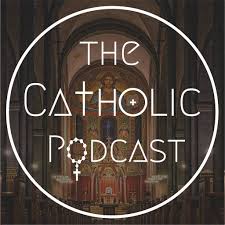
Creating an Indian Catholic Podcast
|
|
Time to read 4 min
|
|
Time to read 4 min
Podcasting has become a powerful tool for evangelization, education, and community building. For Indian Catholics, launching a podcast provides an excellent opportunity to share faith-based discussions, scripture reflections, catechesis, and contemporary Catholic issues. With the right approach, a Catholic podcast can inspire and educate listeners while fostering a sense of connection among Indian Catholics.
This guide will walk you through the essential steps of creating an Indian Catholic podcast, covering equipment selection, content planning, guest invitations, and promotion strategies.
With the rise of digital media, many people now prefer audio content for learning and spiritual nourishment. A podcast can reach:
Young Catholics seeking guidance in their faith.
Parishioners unable to attend church regularly.
Non-Catholics interested in learning about the faith.
Catholic families looking for edifying content.
Listeners can engage with a podcast while commuting, exercising, or doing daily chores. Unlike video content, podcasts require minimal screen time, making them accessible to a broader audience.
There is a growing demand for faith-based content in regional languages and contexts. An Indian Catholic podcast can bridge the gap by offering discussions relevant to the Indian socio-religious landscape.
Starting a podcast does not require a massive budget. With basic yet effective tools, you can ensure professional-quality audio.
Microphone:
Budget Option: Audio-Technica ATR2100x, Samson Q2U
Professional Option: Shure SM7B, Rode NT1-A
Headphones:
Audio-Technica ATH-M20x, Beyerdynamic DT 770 Pro
Audio Interface:
Focusrite Scarlett 2i2, Zoom PodTrak P4 (for multiple guests)
Pop Filter & Boom Arm:
Reduces background noise and improves sound quality.
Recording Software (DAW):
Free Options: Audacity, GarageBand
Paid Options: Adobe Audition, Reaper
Choose a quiet space with minimal echo.
Use soft furnishings (rugs, curtains) to reduce background noise.
Speak close to the microphone for a clearer voice.
Test sound levels before recording.
A well-defined niche helps attract and retain listeners. Indian Catholic podcasts can explore various topics, such as:
Scripture Reflections: Weekly Gospel reflections tailored to Indian cultural contexts.
Faith & Everyday Life: Discussions on integrating Catholic values into daily life.
Catechesis & Apologetics: Explaining Catholic doctrines and answering common faith-related questions.
Church Teachings & Social Issues: Addressing Catholic perspectives on societal challenges.
Testimonies & Personal Journeys: Sharing stories of faith, conversions, or overcoming struggles.
Saints & Church History: Narratives on Indian and global saints and historical events.
Marriage & Family Life: Offering Catholic insights on relationships and parenting.
Vocation & Discernment: Discussions on priesthood, religious life, and lay ministry.
Youth & Catholicism: Engaging young Catholics with relevant issues like career, relationships, and spirituality.
Solo Podcast: One host sharing reflections or teachings.
Interview Style: Featuring guest speakers like priests, religious leaders, and lay experts.
Roundtable Discussions: Multiple hosts discussing Catholic topics.
Narrative Storytelling: Exploring Church history or saint biographies in a storytelling format.
Live Q&A: Answering listener-submitted faith-related questions.
Featuring guests enhances credibility and provides valuable perspectives. Consider inviting:
Priests & Bishops: Discussing theological teachings and pastoral concerns.
Religious Sisters & Brothers: Sharing their missionary experiences.
Catholic Lay Leaders: Offering insights into evangelization and community service.
Catholic Authors & Theologians: Providing intellectual discussions on faith matters.
Everyday Catholics: Sharing testimonies and faith experiences.
Email or Social Media: Politely introduce your podcast and explain why their participation would be valuable.
Parish & Diocesan Connections: Ask local priests or bishops for recommendations.
Catholic Social Networks: Engage with Catholic influencers or theologians through LinkedIn or Facebook groups.
Conduct a sound check before every episode.
Maintain a steady, natural voice.
Keep conversations engaging but structured.
Minimize background noise using noise-reduction tools.
Use software like Audacity or Adobe Audition for:
Removing background noise.
Cutting out mistakes and long pauses.
Enhancing voice clarity.
Adding intro/outro music and sound effects.
Keep episodes between 20-45 minutes for better listener retention.
Once edited, upload your podcast to hosting platforms like:
Anchor (Spotify for Podcasters) – Free and easy to use.
Buzzsprout – Good analytics and distribution.
Podbean – Ideal for monetization options.
Transistor – Great for multiple shows and branding.
Ensure your podcast is available on:
Spotify
Apple Podcasts
Google Podcasts
Amazon Music
YouTube (for video podcasts or audiograms)
Social Media: Share clips and highlights on Instagram, Facebook, and Twitter.
WhatsApp Groups: Send episode links to parish or youth groups.
Collaborations: Cross-promote with other Catholic podcasters or influencers.
Email Newsletters: Encourage subscribers to receive new episode alerts.
Church Announcements: Promote during Mass or parish bulletin boards.
SEO Optimization: Use relevant keywords in titles and descriptions to rank higher on search engines.
Weekly, biweekly, or monthly episodes—choose a frequency you can sustain.
Batch record episodes in advance to maintain consistency.
Encourage listener feedback through emails or social media.
Create an online community where listeners can discuss episode topics.
Conduct polls or Q&A sessions for interactive content.
While not the primary goal, monetization can help sustain the podcast:
Donations & Crowdfunding: Through Patreon or Buy Me a Coffee.
Sponsorships: Partner with Catholic brands or bookstores.
Merchandise: Sell faith-based merchandise like t-shirts or mugs.
Starting an Indian Catholic podcast is an exciting journey that blends faith, creativity, and technology. By selecting meaningful topics, investing in the right equipment, and effectively promoting episodes, you can create a lasting impact within the Catholic community.
Consistency, authenticity, and engagement will be key to building a strong listener base. Begin today, share the Good News, and become a voice of faith in the digital world!